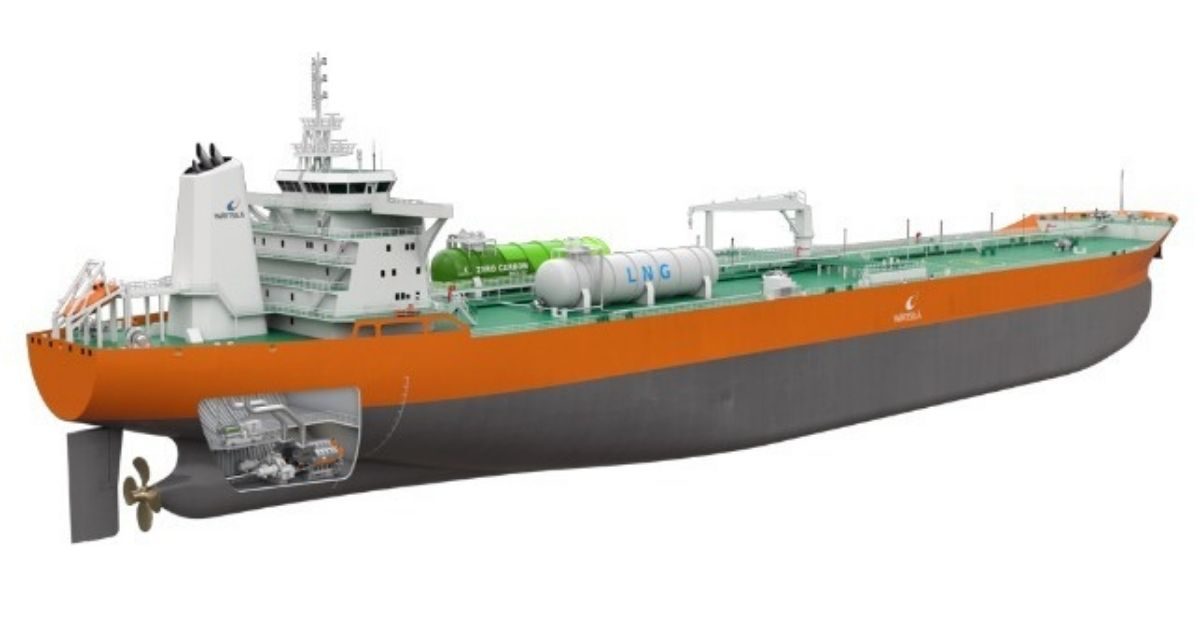As the shipping industry looks for available solutions to meet the pending emissions regulations, a novel propulsion arrangement using available machinery and LNG fuel may present a near-term alternative. According to the work conducted by Wartsila’s technology group and the classification society RINA the concepts could be incorporated into current new builds to achieve significant reductions in emissions providing immediate compliance with the IMO’s pending 2030 targets and future-proofing shipowners current investments in new ships.
“We are really excited about this new concept as it represents a proven and more efficient solution than was earlier possible,” says Antonios Trakakis, Greece Marine technical Director at RINA. “The combination of fewer running components and 100 percent redundancy, with a single engine capable of handling both propulsion and electric power, even in port, promotes both safety and reliability. The highly efficient Wartsila 31DF engine enables ship owners to reduce fuel costs, while at the same time being proactively prepared for the fuels of the future.”
The conventional approach in ship design has been to use 2-stroke engines for propulsion and 4-stroke engines for electric power generation. The Wartsila/RINA arrangement, however, requires just two 4-stroke dual-fuel engines, with options for electric power back-up from batteries or a small dual-fuel generator when the ship is idle.
According to data from Wartsila, the design can achieve a reduction of up to 50 percent from the Energy Efficiency Design Index reference level value. While the IMO’s targets do not come into effect until 2030, the new Energy Efficiency Existing Ship Index (EEXI) will require all existing cargo vessels to meet stricter class limits on emissions for annual surveys performed as of January 1, 2023.
The arrangement features Wartsila 31DF engines operating with LNG fuel. Wartsila promotes the diesel version of the 31 engine type as being the world’s most efficient 4-stroke diesel engine. The engine has proven reliability and performance, along with the flexibility to utilize future zero-carbon fuels.
At current shipping speeds, the performance of the new arrangement provides at least the same, or better efficiency than an equivalent 2-stroke design according to Wartsila and RINA. At slower speeds, it has the potential to reduce fuel consumption and emission levels even further.
Other benefits that they believe are present in this new arrangement is full redundancy while using less machinery, lowering capital expenditure, reducing operational complexity. Optimizing fuel consumption lowers costs and achieves emissions compliance. Overall, the arrangement is as easy and less costly than traditional 2-stroke propulsion systems.
“At Wartsila, we are committed to leading shipping into a new era of higher efficiencies, lower operating costs, and greater environmental sustainability. This cooperation project with RINA is fully in line with these ambitions, and we see this propulsion arrangement as being an important and value-adding option for the coming generation of newbuilds,” says Lars Anderson, Director, Product Management & Sales Support, Wartsila Marine Power.
Both Wartsila and RINA emphasize sustainability in their strategies and values, with a common desire to optimize the technological and operational aspects of the marine industry. According to the companies, the new concept changes traditional ship design thinking and offers a highly efficient, future-proof alternative.
Source : Maritime Executive






